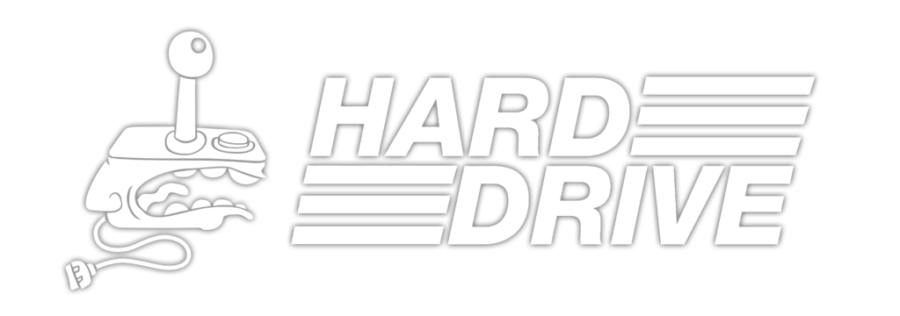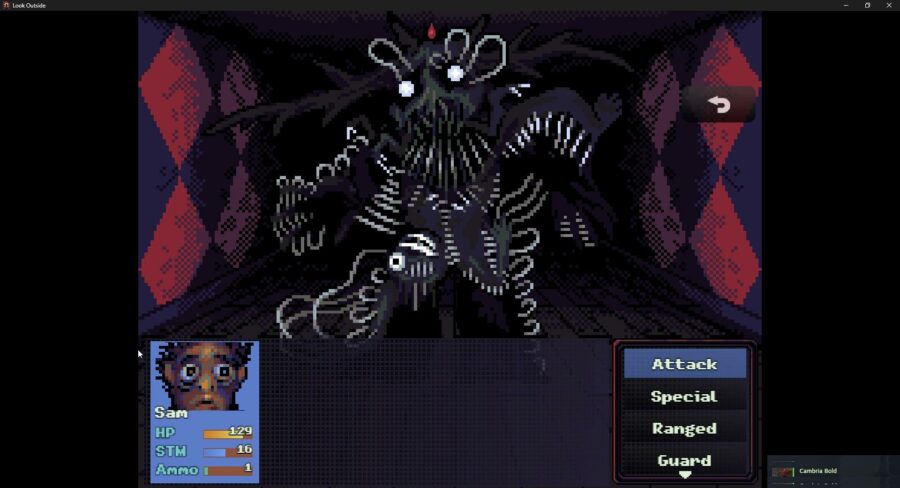I watched a lot of reruns of the original “Muppet Show” as a kid, and one of the things that still sets that show apart in my mind was its occasional swerve into black comedy. Most of its run was devoted to musical numbers or parodies, but every once in a while the creators threw in a sketch in which Muppets went crazy, ate one another, or attacked the guest star.
It took me a while to make the connection, but Look Outside reminds me of those sketches. It’s packed with monsters that feel like they could’ve come out of the Jim Henson workshop, and features similar rapid shifts between dark jokes and outright horror. You’re never comfortable, almost always off-balance, and rarely more than a couple of decisions away from sudden death.
Look Outside, by Canadian solo developer Francis Coulombe, is a survival horror RPG set within a single apartment building. You play as Sam, an unemployed shut-in, who gets up one morning with a strange impulse to open his bedroom window.
If you do, Sam dies. You can hit the Game Over screen in Look Outside in about 20 seconds if you skip text fast enough.
If you don’t open the window, Sam has a conversation through a crack in the wall with his neighbor Sybil. According to her, some unknown phenomenon has appeared in the sky, and looking at it has strange effects on people. There’s a chance that it may disappear 15 days from now. In the meantime, if Sam wants to survive and stay sane, he needs to stay indoors.
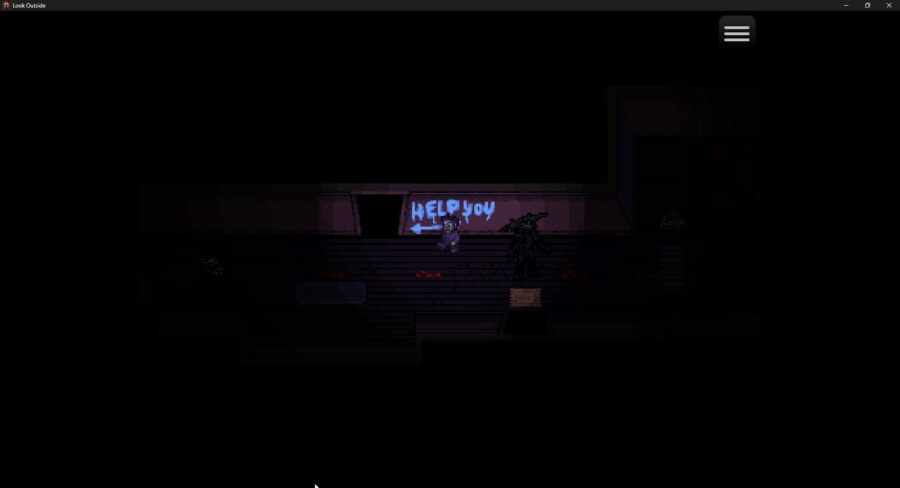
That gives you 15 in-game days to spend however you see fit. You can sit in Sam’s living room doing crossword puzzles for two weeks if you want. That said, there isn’t enough food in Sam’s fridge to last that long, so sooner or later, you have to explore at least some of the building.
Early on, Look Outside is a sort of ground-level spin on console RPGs. You can find sporting goods and thick clothing to equip on Sam as makeshift weapons and armor, hunt for change to use in the local vending machine, turn household chemicals into improvised bombs, and occasionally beat a crazed neighbor to death with a baseball bat. If it reminds me of any one game, it’s probably Earthbound.
With each passing day, the building gets stranger. New enemies appear, locked apartments open up, and you’ll eventually have to search the lower floors for supplies. At that point, you discover that the building itself has mutated, and Look Outside quickly transitions into pure cosmic horror.
That’s also when the game expands beyond its initial roots. If you stick close to Sam’s apartment, there isn’t much to do beyond simple survival. Once you start going to lower floors, you run into more elaborate puzzles, side quests, and a maze that’s patrolled by a nearly invincible monster. The further you get from Sam’s apartment, the further away you get from Look Outside’s original genre.
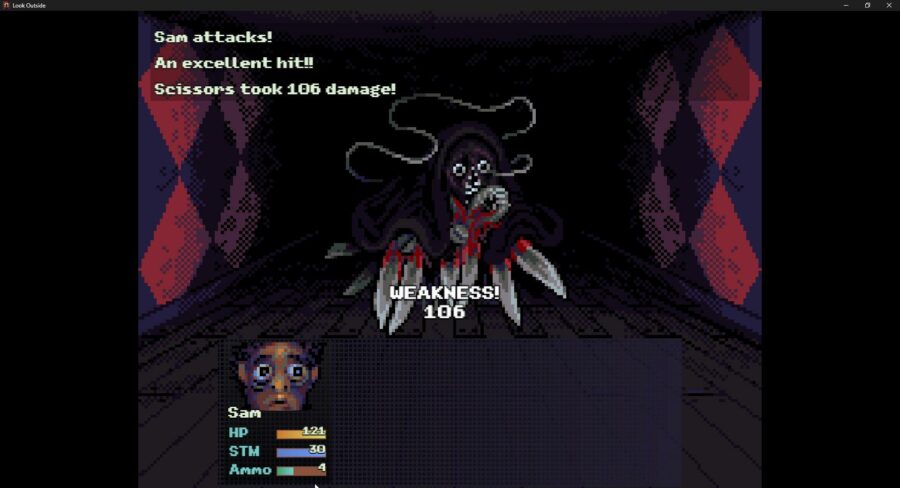
The lower floors feature increasingly more impressive monster designs, which is what spurred my initial comparison to Jim Henson. The first couple of fights in Look Outside just put you up against crazy neighbors, but then I ran into some people whose bodies were rapidly being replaced by teeth and things just got weirder from there.
At that point, Look Outside also hits you with a series of difficult choices. You can opt to fight and kill many of the friendly NPCs throughout the game, make horrible sacrifices to get closer to solving the game’s core mystery, or try to befriend both monsters and other survivors. I don’t know if a zero-kill run is actually possible, but you can get through much of the game without violence.
It’s never less than creepy, especially as you gain access to some of the stranger side missions, but Look Outside never loses sight of its own absurdity. For every moment of pure body horror, there’s another moment that plays with the same scenario for laughs or sympathy.
In a more linear experience, that could’ve caused real problems with the game’s tone, but Look Outside’s open-ended approach helps to reconcile that. If your version of Look Outside ended up as a Lovecraftian spin on Shaun of the Dead, it’s because you made some specific choices along the way.
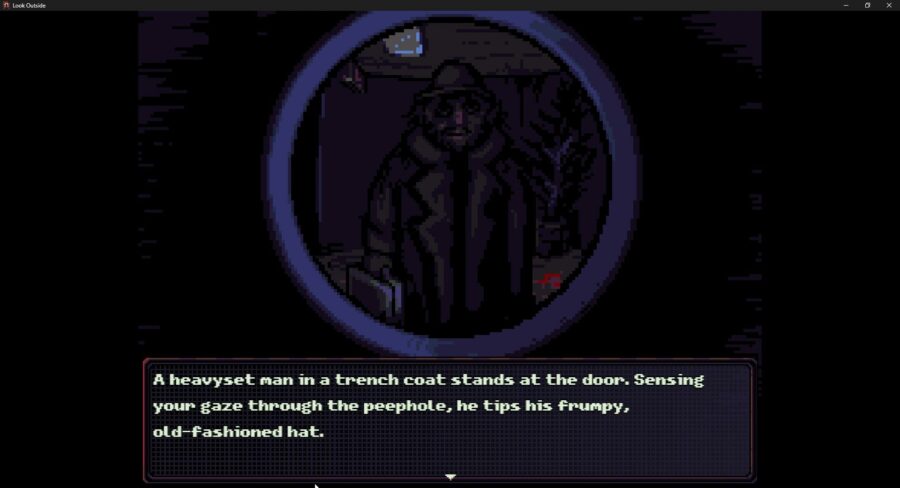
My biggest problem with the overall experience is that Look Outside might get too complicated too quickly. It doesn’t have an in-game map or quest log, and between side missions, main objectives, crafting recipes, key locations, multiple endings, and items with no immediately obvious use, there’s a lot that you’ll want to track.
It also mixes sharply limited resources, including breakable weapons, with a tendency towards unannounced difficulty spikes. You also have very few ways to heal or cure status ailments in the middle of a fight. Sure, you can pause outside of combat to jam six wheels of cheese down Sam’s throat, Skyrim-style, but there aren’t many ways to restore HP if you’re in a tough fight.
As a result, death can be both sudden and cheap. On the intended settings, where you can only save the game in Sam’s apartment, that can set you back an hour or more at a time. It’s frustrating, and I had to put the game down a couple of times to cool off.
I do tend to grade projects like this on a curve, though. Look Outside is a cheap, short game by a single developer that could’ve easily been a dull run at standard horror themes. Instead, it’s an idiosyncratic, immersive RPG with multiple distinct routes and endings. If you’re up for this kind of horror game and don’t mind its deliberate attempts to confuse you, you could get a lot out of Look Outside.
[Look Outside, developed by Francis Coulombe and published by Devolver Digital, is now available on PC via Steam for $9.99. This column was written using a Steam code sent to Hard Drive by a PR representative for Devolver.]
